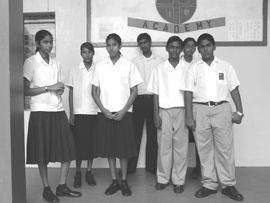East Indian Population on the Decline

The 2001 census indicates that only1,436 or 1.4% of the population of St. Vincent and the Grenadines consider themselves to be East Indian by Ethnic Group. This is a huge drop from the estimated 5000 Vincentians of that ethnicity living here in the 1950s. {{more}}
Reasons given for the drastic decline in representation of this Vincentian ethnic group include mass migration to the United Kingdom, United States and Canada beginning in the 1950s and continuing to present day. It was not uncommon in the 1950s and 1960s for all the children in a family of 12 to go overseas to seek their fortune. One or two of the children, usually the girls, might have remained behind to take care of the parents. Medical Pioneer Dr. Gideon Cordice gives the example of the sons of his uncle Bhudu Richards, all of whom migrated to the United Kingdom in the 1950s.
Another factor is falling birth rates. Pastor Raulford Baptiste, Family Life and Stewardship Director of the East Caribbean Conference of the Seventh Day Adventist Church, uses his family as an example. His grandfather had 12 children. Each of those 12 children had between 8 and 12 children. Family members of Pastor Baptisteâs generation, however, have only 2 or 3 children each.
The final factor is inter-marriage. The 2001 census indicates that 21,303 or 20% of our population is âmixed.â Empirical evidence indicates that this group includes a sizeable proportion of persons of East Indian heritage. During our research for this feature, many persons whom we assumed to be pure ethnic East Indians, revealed that their ancestors included persons of other ethnic groups. Lennox Bowman, Chairman of the National Insurance Services, is the son of George Bowman, a pure ethnic East Indian. However, his mother, Jeannine Abbott-Bowman is mixed Portuguese and African. Bowman, therefore, may be counted among the 20% of Vincentians whose ethnic background is mixed.
Religion
With few exceptions, Vincentians of East Indian origin are Christians. This is unlike the situation in Guyana and Trinidad where many ethnic East Indians have retained their traditional Hindu or Muslim religions.
The reason is simple. Because of the relatively small numbers of Indians here, they were easily penetrated and converted to Christianity. As Pastor Raulford Baptiste puts it, âThey got sucked into the dominant culture.â
Pastor Baptisteâs great-grandfather came to St. Vincent as an indentured labourer from India. All twelve of his children were raised in the Hindu religion. However, when one of the children, Pastor Baptisteâs maternal grandfather, Nathaneil Bacchus, grew up, he converted to Methodism and became a local preacher.
However, according to Pastor Baptiste, in the 1950âs when âthe message of the Adventist Church was proclaimed,â many Indians, especially the younger ones, gravitated to that church. The Adventist Church started in the Coulls Hill and Park Hill areas, then took root in Richland Park. Interestingly, there are now no gatherings of the church in either Coulls Hill or Park Hill.









